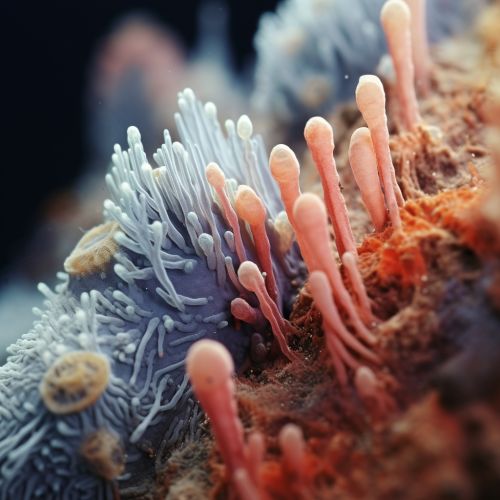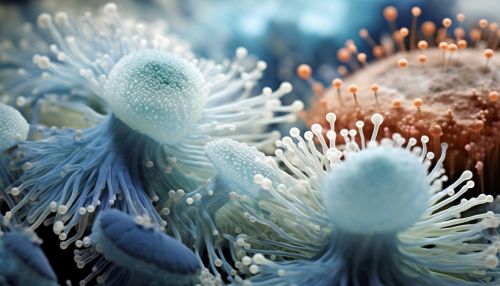Extremophile
Introduction
Extremophiles are organisms that thrive in extreme environments, where most other life forms would not be able to survive. These environments can be characterized by extreme temperatures, high levels of radiation, extreme pressure, high salinity, or other extreme conditions. Extremophiles can be found in various domains of life, including archaea, bacteria, and eukarya.


Classification
Extremophiles are classified based on the type of extreme environment they inhabit. Some of the major types of extremophiles include:
- Thermophiles: These organisms thrive at unusually high temperatures, often above 45°C. Some thermophiles can survive at temperatures above 80°C, and a few can even survive above 100°C.
- Psychrophiles: These organisms thrive at unusually low temperatures, often below 15°C. Some psychrophiles can survive at temperatures below -20°C, and a few can even survive below -80°C.
- Halophiles: These organisms thrive in high-salt environments. Some halophiles can survive in environments with salt concentrations above 20%, and a few can even survive above 30%.
- Acidophiles and Alkaliphiles: These organisms thrive in acidic or alkaline environments, respectively. Some acidophiles can survive at pH levels below 3, and some alkaliphiles can survive at pH levels above 9.
- Piezophiles or Barophiles: These organisms thrive under high pressure. Some piezophiles can survive at pressures above 400 atmospheres, and a few can even survive above 1,000 atmospheres.
- Radiation-resistant organisms: These organisms can survive high levels of radiation, often above 1,000 gray (Gy), and a few can even survive above 5,000 Gy.
Adaptations
Extremophiles have developed a variety of adaptations to survive in extreme environments. These adaptations can involve modifications to their cellular structures, metabolic pathways, and DNA repair mechanisms.
- Thermophilic adaptations: Thermophiles often have proteins with more stable structures that can withstand high temperatures. They may also have lipids in their cell membranes that are more saturated and have longer chains, which can increase membrane stability at high temperatures.
- Psychrophilic adaptations: Psychrophiles often have proteins with more flexible structures that can function at low temperatures. They may also have lipids in their cell membranes that are more unsaturated and have shorter chains, which can increase membrane fluidity at low temperatures.
- Halophilic adaptations: Halophiles often have proteins that can function in high-salt environments. They may also have mechanisms to pump out excess salt or to accumulate compatible solutes that can counteract the effects of high salt concentrations.
- Acidophilic and Alkaliphilic adaptations: Acidophiles and alkaliphiles often have proteins that can function at extreme pH levels. They may also have mechanisms to pump out excess protons or hydroxide ions, or to maintain a neutral internal pH.
- Piezophilic adaptations: Piezophiles often have proteins and membranes that can withstand high pressure. They may also have mechanisms to counteract the effects of pressure on their cellular processes.
- Radiation-resistant adaptations: Radiation-resistant organisms often have efficient DNA repair mechanisms that can fix the damage caused by high levels of radiation.
Ecological Roles
Extremophiles play important roles in various ecological processes. For example, thermophilic bacteria and archaea are often involved in the decomposition of organic matter in hot environments, such as hot springs and deep-sea hydrothermal vents. Psychrophilic bacteria and archaea are often involved in the decomposition of organic matter in cold environments, such as polar regions and deep-sea sediments. Halophilic bacteria and archaea are often involved in the cycling of nutrients in high-salt environments, such as salt flats and salt lakes.
Applications
Extremophiles have numerous applications in various fields, including biotechnology, medicine, and astrobiology.
- Biotechnological applications: Extremophiles are often used in biotechnology for their unique enzymes and other biomolecules. For example, the thermophilic bacterium Thermus aquaticus produces a heat-stable DNA polymerase that is used in the polymerase chain reaction (PCR), a common technique in molecular biology.
- Medical applications: Extremophiles are often used in medicine for their unique biomolecules. For example, the radiation-resistant bacterium Deinococcus radiodurans produces a DNA repair enzyme that is used in the treatment of radiation damage.
- Astrobiological applications: Extremophiles are often used in astrobiology as models for potential extraterrestrial life. The study of extremophiles can provide insights into the types of environments and adaptations that might support life on other planets.
